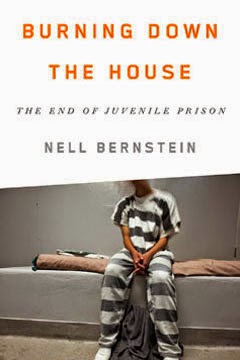
By: GARY GATELY | January 22, 2015
WASHINGTON — A national juvenile justice campaign launched today with the ambitious goals of halving youth incarceration in 15 states over the next five years while expanding community-based alternatives for offenders.
The Youth First! Initiative — founded by longtime juvenile justice advocate Liz Ryan — will also seek to reduce rampant racial and ethnic disparities in juvenile incarceration.
“The vast majority of [incarcerated] kids are in for things like misdemeanors, status offenses [such as cutting school or alcohol possession], property offenses, drug offenses, even probation and parole violations,” Ryan said. “To me, it just underscores that at a minimum, we could experience another 50 percent drop in youth incarceration.”

She said she is focusing on 15 states for starters — she would not name them, saying some details need to be worked out first — because that’s enough to form a “tipping point,” or critical mass, exemplifying effective “decarceration.”
Ryan noted that each day some 60,000 juveniles are in residential placement nationwide at a cost to taxpayers of about $5 billion a year. She said the money saved from closing juvenile correctional facilities could go toward paying for much more effective community-based alternatives that better serve one of the juvenile justice system’s central missions: rehabilitation of youths.
Juvenile justice advocates partnering with Youth First! welcomed its launch.
“What’s key for us is the Youth First! initiative will really leverage the kind of information that organizations like JPI and other organizations produce,” said Jason Ziedenberg, director of policy and research at the Justice Policy Institutethink tank.
For example, last month JPI released the report “Sticker Shock: The Full Price Tag for Youth Incarceration,” which revealed that in 33 states, taxpayers can spend $100,000 or more a year to incarcerate a youth. By contrast, effective community-based approaches individually tailored to a youth’s needs can cost as little as $27,375 a year.
The report also analyzed long-term costs of confinement, including costs to victims and taxpayers because of the increased likelihood an incarcerated youth will later commit another offense; the costs of lost educational opportunities and, in turn, a youth’s ability to work and pay taxes; and the costs of their reliance on public assistance later. Conservatively, the report said, the long-term costs of incarcerating youths total up to $21 billion a year.
“This is the information we need to get out there,” Ziedenberg said. “It needs to be concretely attached to efforts on the ground to make changes on these issues. These could be changes to a law or changing a budget so that more young people are served outside a correctional setting, or it could be just building public support for policies like screening misdemeanors out of the system or developing better ways of serving young people close to home.”
While juvenile arrests have fallen and incarceration rates have hit an all-time low, many nonviolent offenders are still locked up in dangerous, prisonlike facilities where abuse is common, Ryan said. Recidivism among these youths is extremely high, and being incarcerated as a youngster greatly increases the risk of entering the adult criminal justice system.
The latest statistics on youths incarcerated in state facilities show about one in four had committed violent offenses. The remainder had been incarcerated for nonviolent offenses, according to the figures for 2011 from the federal Office of Juvenile Justice and Delinquency Prevention.
“We have a system that I think is still primarily relying on the most expensive and most ineffective way of handling kids in the juvenile justice system,” Ryan said. “Most of these kids don’t need to be locked up.
“I think we can really fundamentally change how children are treated in the system, particularly by closing of institutions that house kids and particularly these deep-end training schools, youth prisons, correctional facilities — whatever you want to call them,” she said. “With the [incarceration] numbers going down and continuing to go down, that offers us an opportunity to really rethink and relook at what we have been doing and make more dramatic changes.”
States including Alabama, California, New York, Ohio and Texas along with the District of Columbia have begun shutting down juvenile facilities and reallocating funds for community-based programs.
There’s also increasing bipartisan support in the states for juvenile justice reform, as more and more Republicans and Democrats alike have come to view mass incarceration of youth as a costly failure — in terms of money, wasted potential of young lives and high recidivism.
Ryan also pointed to recent research showing adolescents’ brains are not fully developed and showing youths are more susceptible than adults to peer pressure, more impulsive, more likely to take risks, less likely to consider long-term consequences — and thus less culpable. But the research also shows youths are amenable to rehabilitation.
“There’s a window of opportunity to reform here,” Ryan said.
Youth First!, which is Washington-based, is to partner with national and state organizations on state-based campaigns to close youth facilities and advocate for policies that significantly reduce youth incarceration, decrease racial and ethnic disparities and expand community-based alternatives.
Partners include the New York City-based American Civil Liberties Union, the Washington-based Justice Policy Institute, the Philadelphia-based Juvenile Law Center, the Harrisburg, Pa.-based Youth Advocate Programs Inc. (YAP) and theCenter on Budget and Policy Priorities, a Washington-based think tank.
Law students at Northwestern University Law School will provide the initiative with legal research, policy analysis and help devising strategies.
In a letter sent to juvenile justice advocates Thursday, Ryan said the initiative will provide “robust” communications and media relations support at the state and national level; offer technical assistance to state-based campaigns on research, budget analysis, advocacy and strategy; connect state campaigns to one another and to national juvenile justice reform organizations; engage families of youths affected by the juvenile justice systems, and document and disseminate models of what works.
Shaena Fazal, national policy director for YAP, which provides community-based alternatives to out-of-home placements in 17 states, said Youth First! and YAP have common values on juvenile justice.
“We share a vision of a more just society where kids get what they need and don’t get locked in cages, and I think together we can help get them out,” Fazal said.
She said many youths are locked up for their behavior when they pose no risk to public safety.
“There’s no need to remove a child from their families and communities and put them in a punitive setting if they have an unmet need, especially when they’re not a threat to public safety,” Fazal said.
The initiative is receiving funding from the Baltimore-based Annie E. Casey Foundation, the Washington-based Butler Family Fund and the Washington-based Public Welfare Foundation.
Ryan brings to her new role deep knowledge of juvenile justice issues. She is the former CEO of the Campaign for Youth Justice, which she founded in 2004. The Washington-based nonprofit focuses on ending the practice of trying, sentencing and incarcerating youth in the adult criminal justice system.
She also led the launch of the Act 4 Juvenile Justice campaign to reauthorize the Juvenile Justice and Delinquency Prevention Act and has served in numerous other juvenile justice roles and written widely on the subject.














